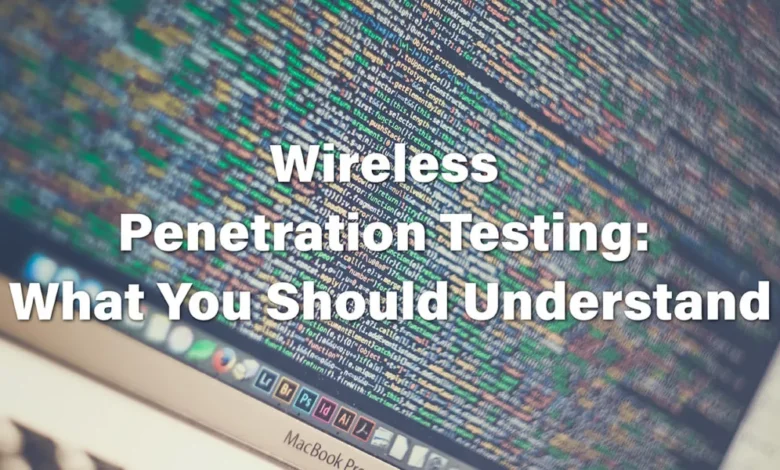Penetration Testing for Wireless Networks PART 1

What is penetration testing for wireless networks?
Within the cybersecurity field, wireless network penetration testing, sometimes known as “wireless pen testing,” is a specialized specialty that focuses on wireless technology and its application. It’s a methodical and proactive strategy to finding weaknesses in wireless networks, the unseen lifelines that keep our computers, smartphones, and Internet of Things gadgets linked and communicating. Penetration testers evaluate a network’s ability to withstand actual threats by mimicking cyberattacks. This helps to ensure that sensitive data traveling across public networks is secure and private.
Do cyber threats really pose a threat to your wireless networks? Testing for wireless network intrusion is essential to providing a confident response to that query.
Below is what this guide on wireless penetration testing will teach you;
- Wireless Penetration Testing’s Significance
- Wireless Network Dangers
- The Procedure for Testing Wireless Penetration
- Instruments of the Trade
- Procedures to Adhere to
- Typical Wireless Weaknesses
- Commonly Asked Questions
Why is conducting a wireless network penetration test necessary?
In order to retain resilience, wireless penetration testing is a crucial part of a proactive cybersecurity strategy, not a one-time patch. This is why it’s so important to test often:
- Evolving Threat Landscape: New wireless vulnerabilities and attack techniques emerge constantly. Regular assessments ensure your defenses keep pace with the latest threats.
- Dynamic Network Environments: Wireless networks change frequently as devices connect and disconnect, configurations are modified, and new equipment is added. Frequent testing identifies new risks introduced by these changes.
- Demonstrating Due Diligence: Regular testing shows a commitment to security, essentials for internal stakeholders and external partners, customers, or regulators.
- Compliance Adherence: Many industries mandate regular security assessments. Regular wireless network pen testing helps organizations meet those compliance requirements and avoid penalties.
- Proactive Risk Mitigation: Uncovering vulnerabilities before attackers exploit them allows for targeted remediation efforts, significantly reducing the risk of breaches and their associated costs regarding data loss, operational disruption, and reputational damage.
What dangers come with using wireless networks?
Wireless networks are convenient, but they come with risks that could jeopardize the basic structure of an organization. The following are some of the main issues:
- Operational Disruption: Denial-of-service (DoS) attacks have the ability to completely stop vital business processes that depend on wireless connectivity, like IoT-enabled systems and point-of-sale systems. The ensuing downtime may result in a large loss of revenue.
- Compliance Violations: Insufficient wireless security can lead to a breach of industry standards such as PCI-DSS, NHS DSPT, and HIPAA, which can result in serious financial penalties and harm to the company’s reputation.
- Lateral Movement: Attackers can travel laterally once inside a wireless network to get access to and take advantage of more sensitive systems, which are generally more secure on wired networks. IT teams, for instance, frequently combine backend technology as a shared backend and offer separate wireless network front ends for staff/corporate networks and visitors. Because there is no logical division between the environments, this bridge introduces a major misconfiguration risk to the host organization.
- Data breaches: Over insecure wireless networks, sensitive firm data, including financial records, trade secrets, and customer information, is susceptible to theft. Such violations can have negative effects on one’s reputation, result in fines from the authorities, and erode consumer confidence.
- Theft of intellectual property: Attackers may target a company’s proprietary information, such as product designs and R&D data, which can cause significant financial losses and erode its competitive advantage.
How are tests using wireless penetrations conducted?
Wireless penetration tests are customized, all-encompassing operations that look at every aspect of a network’s defenses. They are not uniform. The comprehensive technique for wireless penetration testing includes measures that resemble the activities of possible attackers, such as monitoring wireless traffic and taking advantage of vulnerabilities that are found.
By making sure every device is carefully examined for vulnerabilities, the aim is to provide a comprehensive view of the security posture of the wireless network. As a first stage in this procedure, testers create wireless network connections in order to mimic the actions of possible attackers. This is an important way to determine how vulnerable the network is to unauthorized access.
By using the right techniques and resources, testers open the door for targeted, effective testing that finds defects and helps create a more stable and resilient wireless network.
1. Planning & Scoping
Before initiating a wireless pen test, it is vital to undergo a phase of planning and scoping. This stage sets the foundation for the entire test and involves:
- Collaboration with the client to understand their specific concerns
- Identifying the critical assets that need security measures
- Determining any regulatory requirements that must be met
The scope of the test is then determined, clearly defining which networks, devices, and frequency bands will be included in the assessment. Finally, rules of engagement are established, setting clear boundaries on the actions permissible during the test to avoid unintended disruptions.
2. Reconnaissance
Reconnaissance represents the phase of data collection in a wireless pen test. Testers employ passive and active techniques to identify wireless networks belonging to the customer and collect crucial information about the target network. They might quietly listen for wireless signals with tools like Kismet or actively send probe requests to enumerate details from access points.
Wardriving—or war walking—is another tactic used to map the coverage of a network, seeking out not just the legitimate access points but also any rogue ones that could pose a threat. This phase is akin to a digital stakeout, laying the groundwork for the following steps.
3. Vulnerability Identification
In identifying vulnerabilities, testers convert their gathered data into usable intelligence. They scrutinize the network for:
- encryption weaknesses, such as outdated WEP or vulnerable WPA/WPA2 protocols
- devices with default or insecure settings that could be easily exploited
- Rogue access points
- client misconfigurations
These vulnerabilities can provide malicious hackers with a backdoor into the network. This stage connects the dots between the gathered information and potential attack vectors, highlighting areas where the network’s armor is thinnest regarding network traffic.
4. Exploitation
Exploitation marks the critical juncture in wireless penetration testing. It’s the stage where testers apply their skills to crack encryption and execute SAE exploitation and associated attacks. Techniques like KRACK can exploit handshake messages, while pre-computed hash tables aid in speeding up encryption cracking.
This phase is crucial as it illustrates how an attacker could gain unauthorized access to the network and the potential damage they could inflict.
5. Post-Exploitation
Post-exploitation explores the possible actions an attacker might undertake after breaching the network. Testers simulate lateral movement to explore how far an attacker could penetrate the wireless infrastructure. They also test the possibility of data exfiltration, including:
- Whether sensitive information can be siphoned off from compromised systems
- How easily an attacker can access and manipulate data
- Whether the attacker can escalate privileges and gain control over critical systems
This stage is about understanding a breach’s full impact and ongoing risks.
6. Reporting
Reporting is the concluding step once testers have finished the wireless pen test. This document is a comprehensive summary that includes:
- The process and methodology used during the test
- The results of the test, including any weaknesses discovered
- The techniques used in the exploitation
- Recommendations for remediation and strengthening network defenses
A well-prepared penetration testing report should:
- Recount the test
- Provide valuable insights
- Serve as a roadmap for future security strategies
- Ensure that the lessons learned translate into more robust defenses.
Part II shall be discussed in our next post. Watch Out

